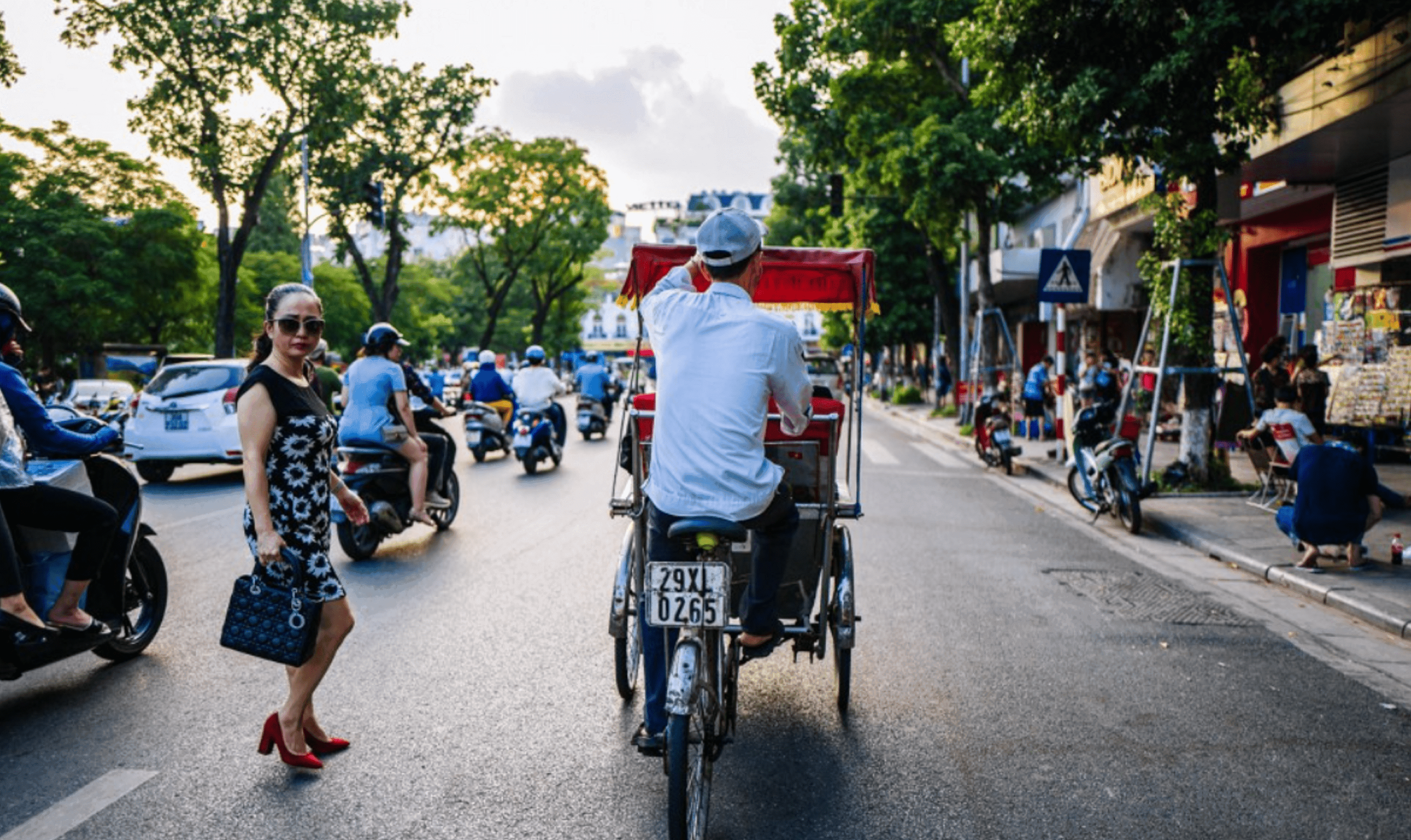Vietnam's history and growth potential
Culture
7 minutes
Feb 27, 2024
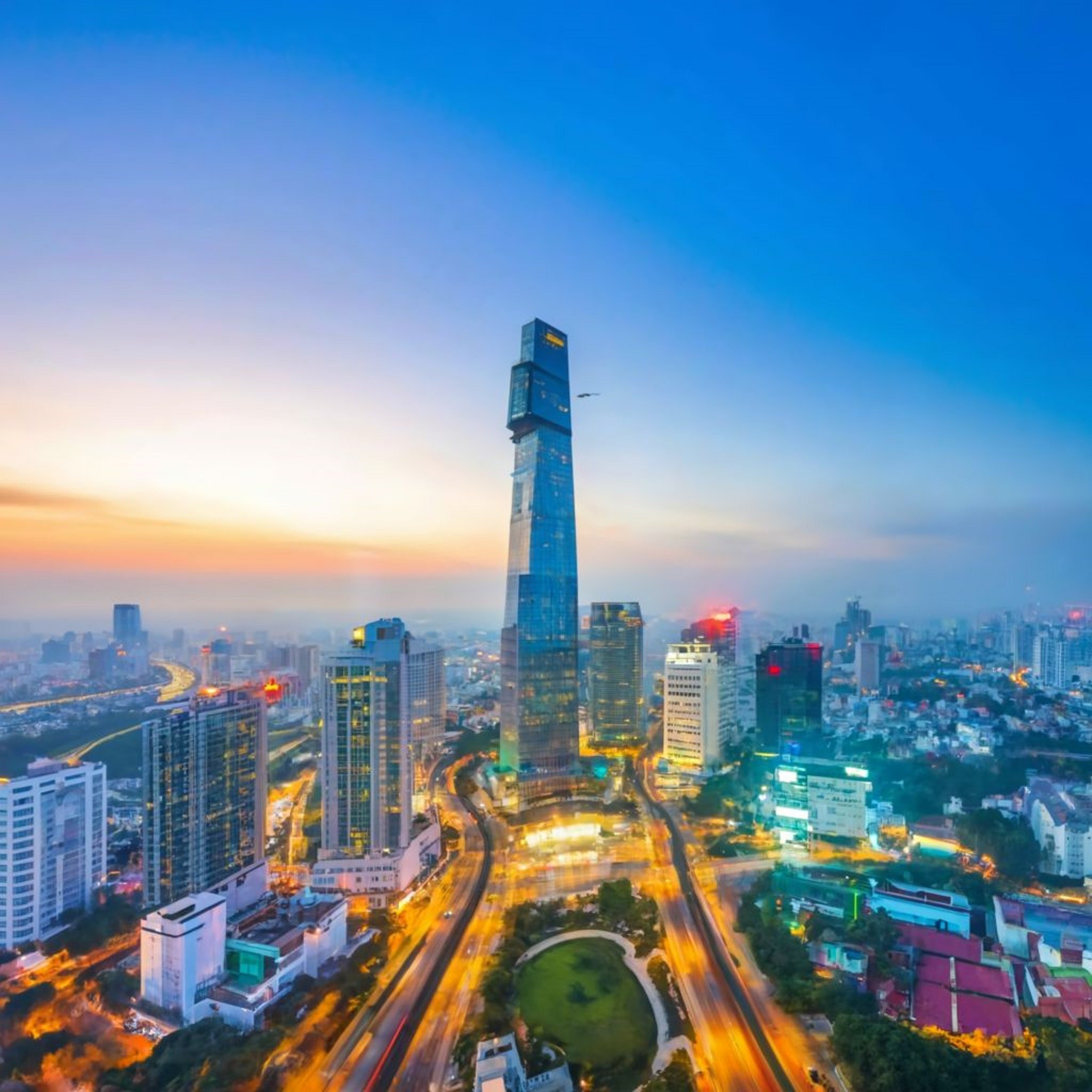
Vietnam, located on the Indochina Peninsula in Southeast Asia, has Hanoi as its capital and Ho Chi Minh as its largest city. The national flag, established as the Democratic Republic of Vietnam in 1945, was improved after the First Indochina War and symbolizes the unity of workers, farmers, intellectuals, youth, and soldiers. Vietnam borders China, Laos, and Cambodia, and has a long coastline facing the sea to the east. The population is approximately 100 million, ranking 15th in the world, and per capita GDP is relatively low at approximately $2,700.
Ancient History and Chinese Rule
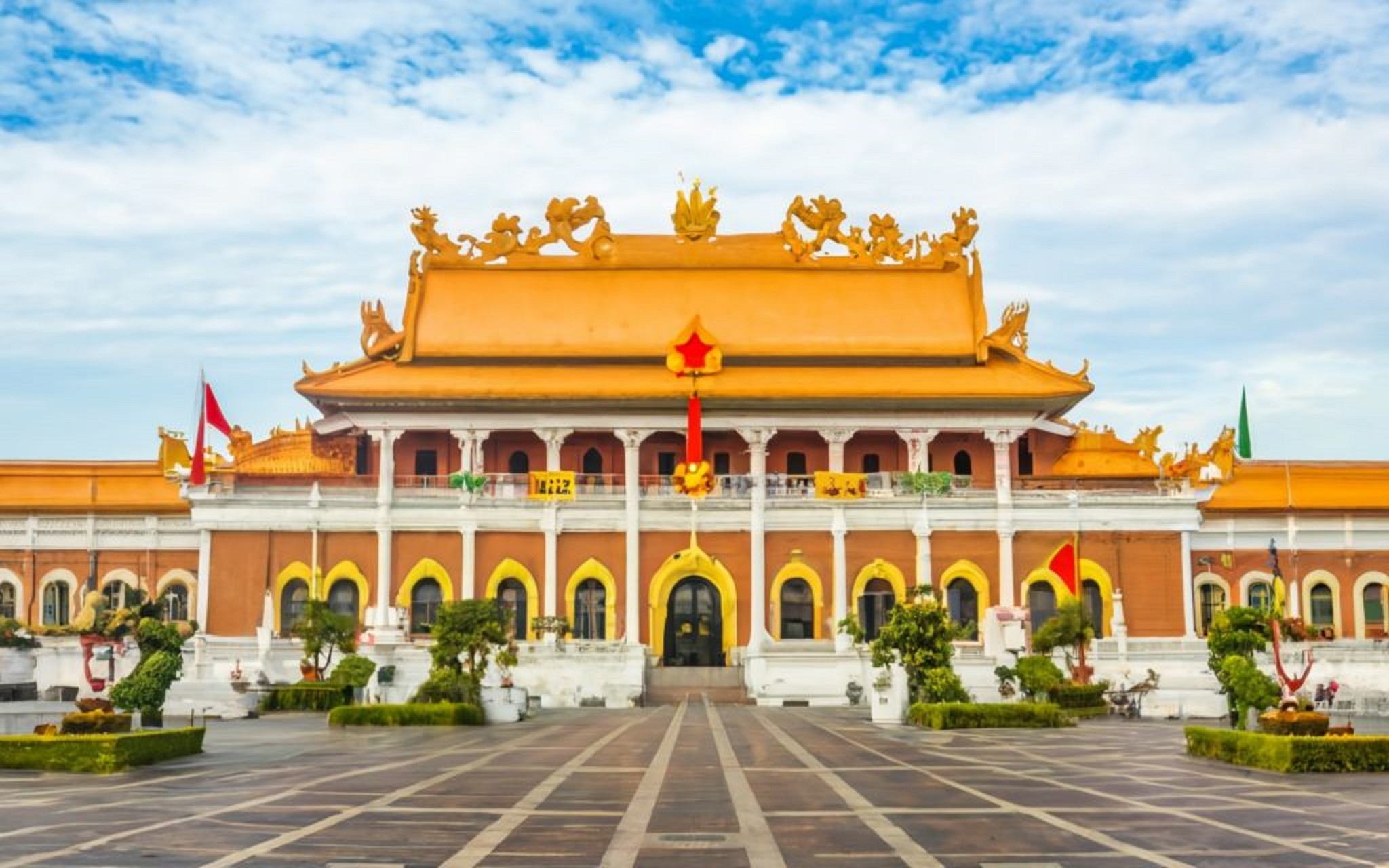
Vietnam has a rich history dating back to the Paleolithic Age, with evidence of human settlements and the development of rice farming around 2000 BC. The Dong Son culture, a Bronze Age civilization, thrived in ancient Vietnam. The region experienced periods of Chinese rule for about 1,000 years, but in 938, Ngo Quyen established the Ngo Dynasty, marking the first successful escape from Chinese rule. Subsequent dynasties, such as the Dinh, Le, Ly, and Tran, rose and fell. Vietnam faced another period of Chinese domination after the collapse of the Ho Dynasty in 1406, but in 1418, Le Loi led a successful war of independence, establishing the Le Dynasty.
Vietnam War and Reunification
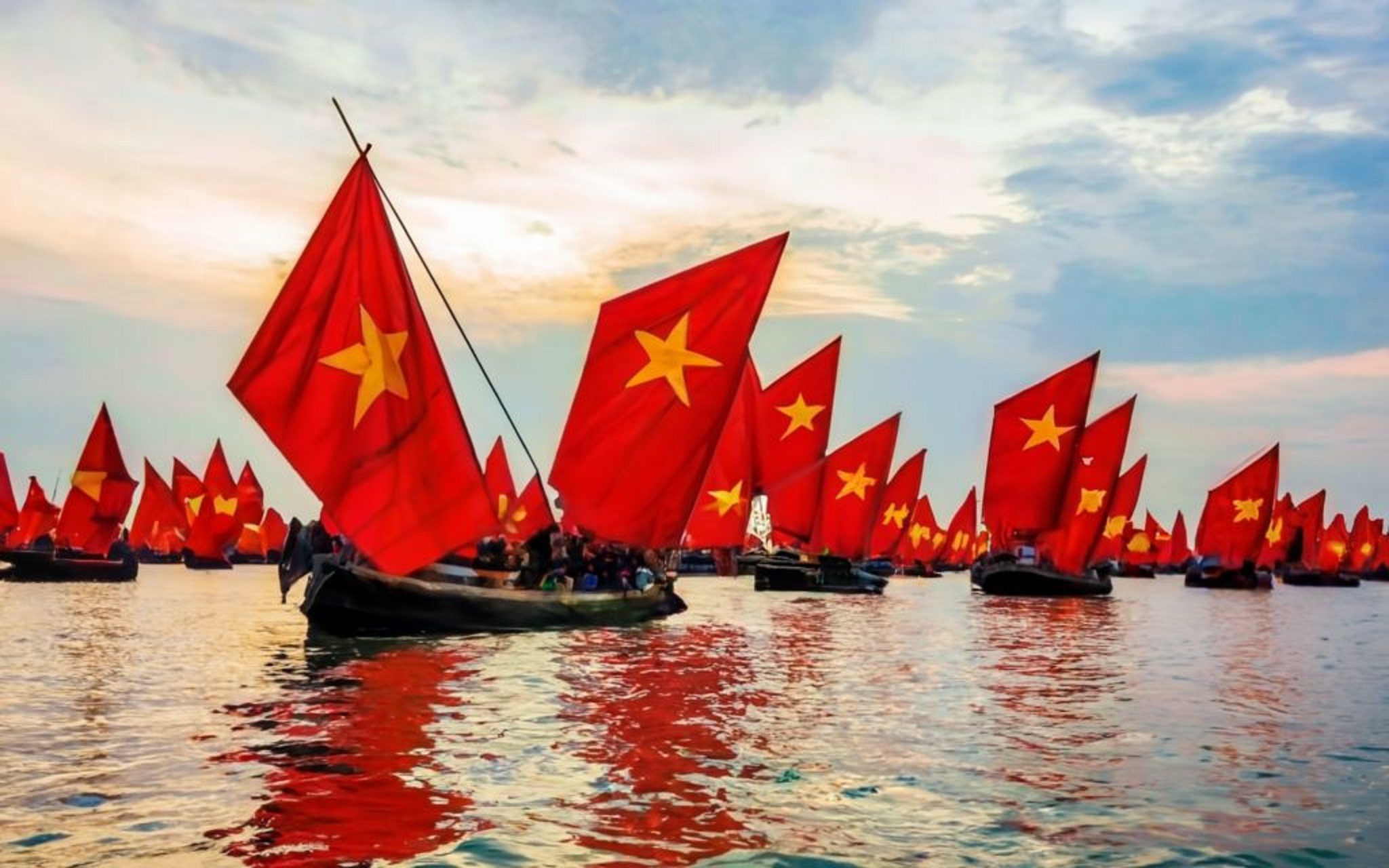
In the 19th century, France occupied Vietnam, starting with the attack on Danang in 1858 and the subsequent occupation of Saigon in 1859. The Nguyen Dynasty, ruling Vietnam at the time, became part of French Indochina until the end of World War II. During the 20th century, the Vietnamese independence movement gained momentum, with communist-affiliated political parties emerging, including the Vietnamese Communist Party led by Ho Chi Minh. The Vietnam Independence League was formed to resist Japanese occupation during World War II, and in August 1945, the Democratic Republic of Vietnam was established. However, France sought to regain control, leading to the First Indochina War.
Vietnam War and Reunification
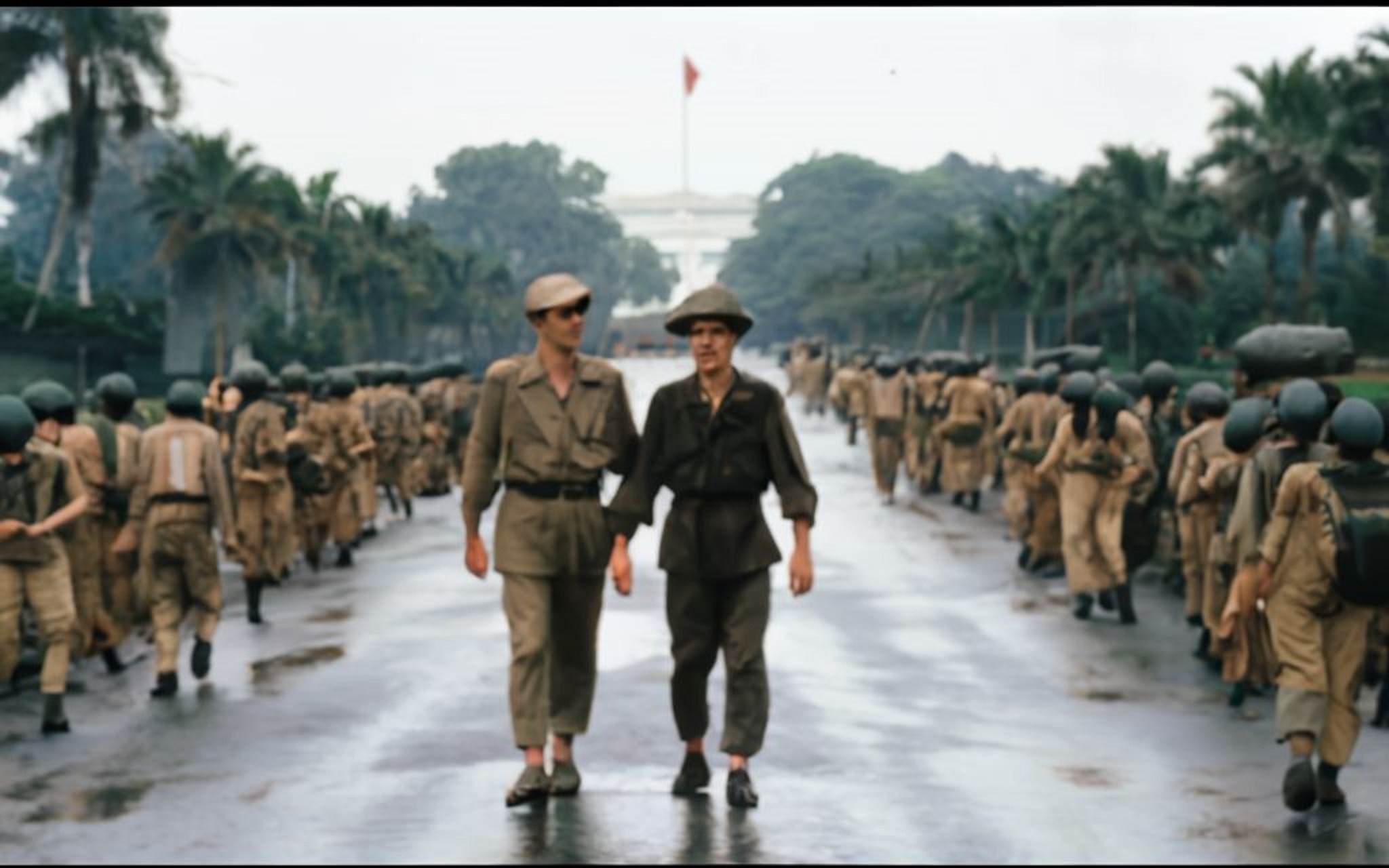
The First Indochina War, which lasted from 1946 to 1954, ended with a major victory for the Vietnamese army in the Battle of Dien Bien Phu, forcing the French to withdraw. The Geneva Agreement divided Vietnam into North and South, with the Republic of Vietnam established in the south. The Second Indochina War, commonly known as the Vietnam War, ensued as the United States became involved. The war lasted from 1964 to 1975, with the United States bombing North Vietnam and deploying a significant number of troops. However, Vietnam persisted in its resistance, and under the Paris Agreement in 1973, the United States withdrew completely. In 1975, North Vietnam occupied the entire region, leading to the establishment of the Socialist Republic of Vietnam.
Post-War Challenges and Economic Development
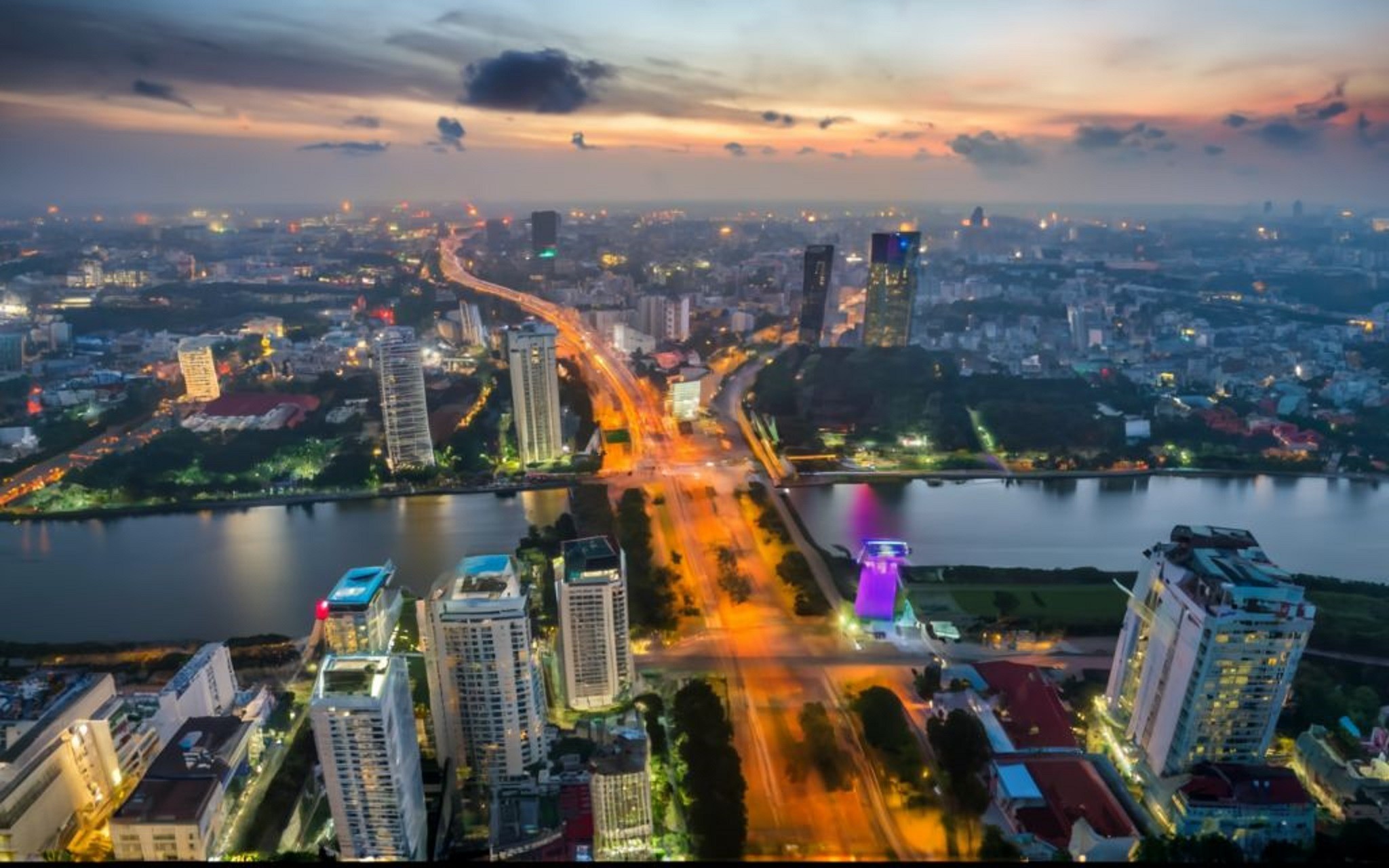
Following the war, Vietnam faced numerous challenges in rebuilding the country. However, in 1986, the implementation of the 'Doi Moi' policy marked a turning point, as Vietnam began to break away from isolation and pursue market economic development. The country has made significant progress since then, with improvements in various sectors. Vietnam continues to strive for economic growth and development, while also preserving its cultural heritage and addressing social issues.
Vietnam’s growth potential
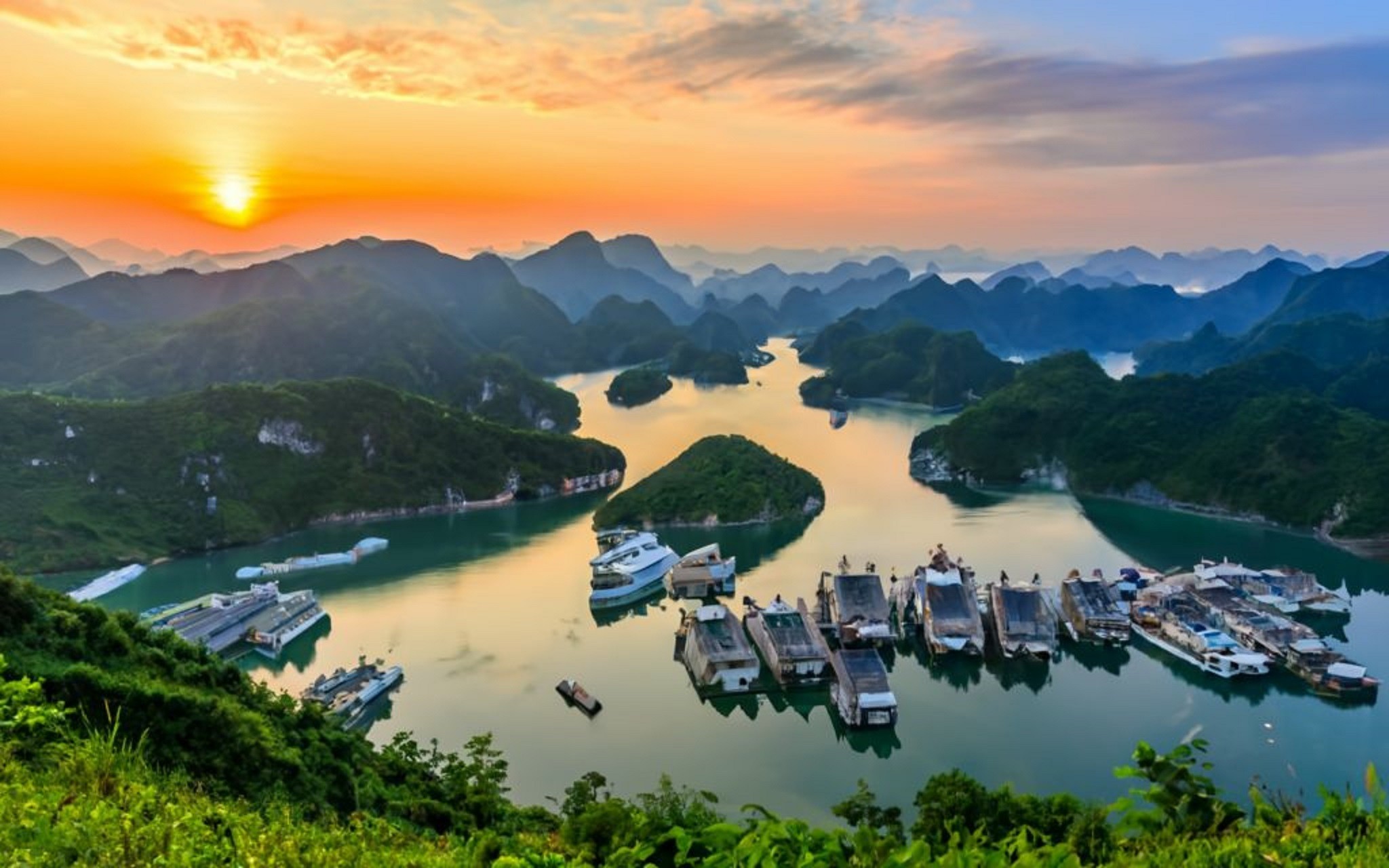
Firstly, Vietnam benefits from a large and abundant population, which provides a strong labor force. With a population of around 100 million people, Vietnam has a young and dynamic workforce that can contribute to economic growth and development. This demographic advantage allows for a large consumer base and a potential pool of skilled workers.
Secondly, Vietnam has made significant progress in attracting foreign direct investment (FDI) over the years. The country has implemented various economic reforms and policies to create a favorable business environment, including tax incentives, streamlined regulations, and improved infrastructure. As a result, many multinational corporations have established manufacturing facilities in Vietnam, taking advantage of its lower labor costs and strategic location in Southeast Asia.
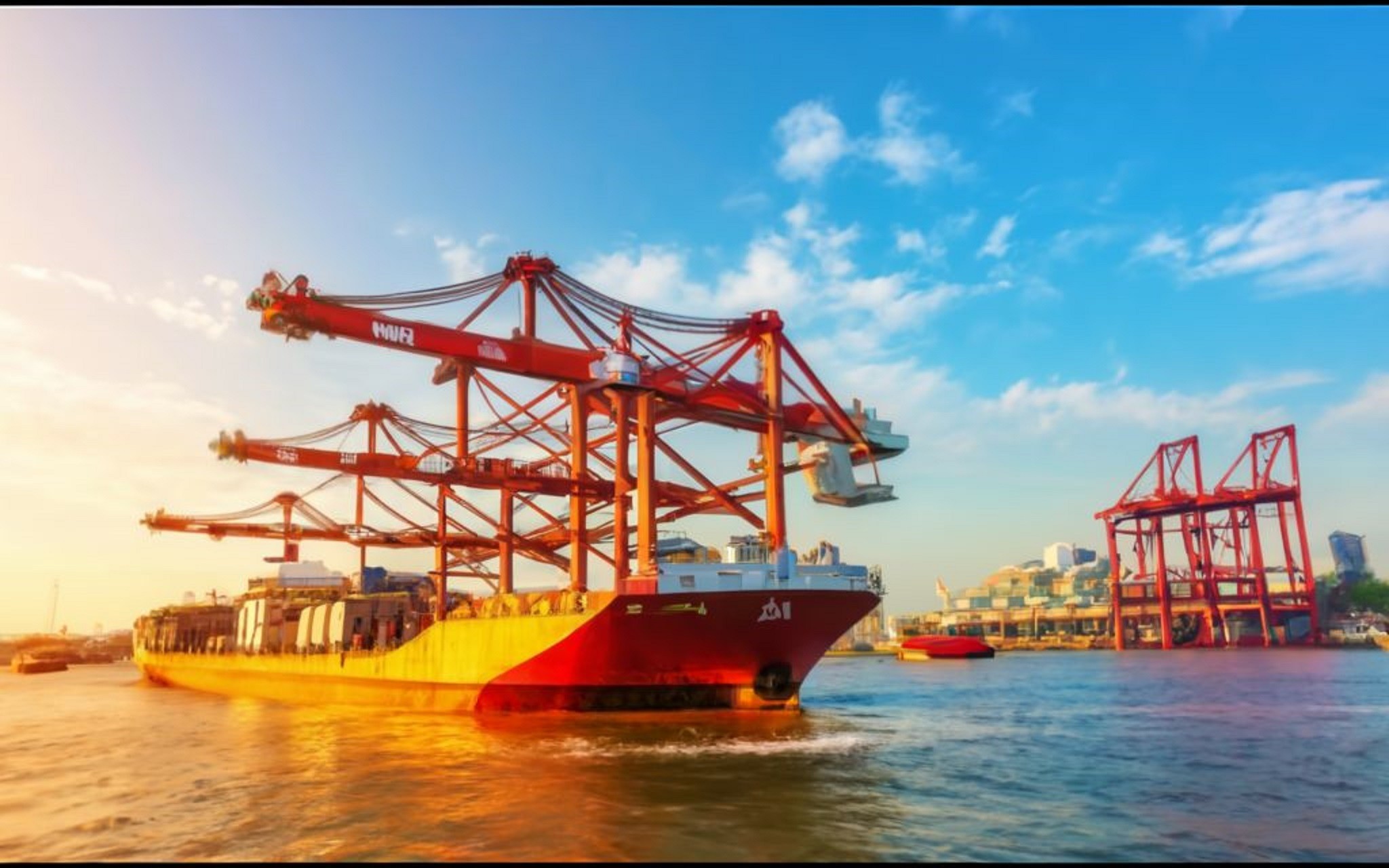
Furthermore, Vietnam has been actively pursuing international trade agreements, such as the Comprehensive and Progressive Agreement for Trans-Pacific Partnership (CPTPP) and the European Union-Vietnam Free Trade Agreement (EVFTA). These agreements provide Vietnam with increased access to global markets, promoting exports and attracting more foreign investment.
In addition, Vietnam has shown resilience and adaptability in the face of challenges. The country has successfully transitioned from a centrally planned economy to a market-oriented one, implementing the "Doi Moi" policy in 1986. This policy has led to significant economic reforms, liberalization, and integration into the global economy. Vietnam has also demonstrated its ability to weather economic downturns, such as the Asian financial crisis in the late 1990s and the global financial crisis in 2008.

Moreover, Vietnam has a diverse and expanding manufacturing sector, with strengths in industries such as textiles, electronics, and automotive. The country has also been investing in high-tech industries, including information technology and renewable energy. This diversification of industries helps to reduce reliance on a single sector and promotes sustainable economic growth.
Vietnam's strategic location

Vietnam's strategic location in Southeast Asia provides opportunities for regional integration and connectivity. The country's proximity to major markets, such as China and ASEAN countries, allows for increased trade and investment flows. Vietnam has been actively participating in regional initiatives, such as the Belt and Road Initiative and the ASEAN Economic Community, which further enhance its economic prospects.
In conclusion, Vietnam's growth potential is driven by its abundant labor force, successful attraction of foreign investment, participation in international trade agreements, resilience in the face of challenges, diverse manufacturing sector, and strategic location. While there are still challenges to overcome, such as infrastructure development and improving the business environment, Vietnam's trajectory suggests a promising future for continued economic growth and development.
Table of contents
Vietnam's history and growth potential
Culture
7 minutes
Feb 27, 2024

Vietnam, located on the Indochina Peninsula in Southeast Asia, has Hanoi as its capital and Ho Chi Minh as its largest city. The national flag, established as the Democratic Republic of Vietnam in 1945, was improved after the First Indochina War and symbolizes the unity of workers, farmers, intellectuals, youth, and soldiers. Vietnam borders China, Laos, and Cambodia, and has a long coastline facing the sea to the east. The population is approximately 100 million, ranking 15th in the world, and per capita GDP is relatively low at approximately $2,700.
Ancient History and Chinese Rule

Vietnam has a rich history dating back to the Paleolithic Age, with evidence of human settlements and the development of rice farming around 2000 BC. The Dong Son culture, a Bronze Age civilization, thrived in ancient Vietnam. The region experienced periods of Chinese rule for about 1,000 years, but in 938, Ngo Quyen established the Ngo Dynasty, marking the first successful escape from Chinese rule. Subsequent dynasties, such as the Dinh, Le, Ly, and Tran, rose and fell. Vietnam faced another period of Chinese domination after the collapse of the Ho Dynasty in 1406, but in 1418, Le Loi led a successful war of independence, establishing the Le Dynasty.
French Colonization and Independence

In the 19th century, France occupied Vietnam, starting with the attack on Danang in 1858 and the subsequent occupation of Saigon in 1859. The Nguyen Dynasty, ruling Vietnam at the time, became part of French Indochina until the end of World War II. During the 20th century, the Vietnamese independence movement gained momentum, with communist-affiliated political parties emerging, including the Vietnamese Communist Party led by Ho Chi Minh. The Vietnam Independence League was formed to resist Japanese occupation during World War II, and in August 1945, the Democratic Republic of Vietnam was established. However, France sought to regain control, leading to the First Indochina War.
Vietnam War and Reunification

The First Indochina War, which lasted from 1946 to 1954, ended with a major victory for the Vietnamese army in the Battle of Dien Bien Phu, forcing the French to withdraw. The Geneva Agreement divided Vietnam into North and South, with the Republic of Vietnam established in the south. The Second Indochina War, commonly known as the Vietnam War, ensued as the United States became involved. The war lasted from 1964 to 1975, with the United States bombing North Vietnam and deploying a significant number of troops. However, Vietnam persisted in its resistance, and under the Paris Agreement in 1973, the United States withdrew completely. In 1975, North Vietnam occupied the entire region, leading to the establishment of the Socialist Republic of Vietnam.
Post-War Challenges and Economic Development

Following the war, Vietnam faced numerous challenges in rebuilding the country. However, in 1986, the implementation of the 'Doi Moi' policy marked a turning point, as Vietnam began to break away from isolation and pursue market economic development. The country has made significant progress since then, with improvements in various sectors. Vietnam continues to strive for economic growth and development, while also preserving its cultural heritage and addressing social issues.
Vietnam’s growth potential

Firstly, Vietnam benefits from a large and abundant population, which provides a strong labor force. With a population of around 100 million people, Vietnam has a young and dynamic workforce that can contribute to economic growth and development. This demographic advantage allows for a large consumer base and a potential pool of skilled workers.
Secondly, Vietnam has made significant progress in attracting foreign direct investment (FDI) over the years. The country has implemented various economic reforms and policies to create a favorable business environment, including tax incentives, streamlined regulations, and improved infrastructure. As a result, many multinational corporations have established manufacturing facilities in Vietnam, taking advantage of its lower labor costs and strategic location in Southeast Asia.

Furthermore, Vietnam has been actively pursuing international trade agreements, such as the Comprehensive and Progressive Agreement for Trans-Pacific Partnership (CPTPP) and the European Union-Vietnam Free Trade Agreement (EVFTA). These agreements provide Vietnam with increased access to global markets, promoting exports and attracting more foreign investment.
In addition, Vietnam has shown resilience and adaptability in the face of challenges. The country has successfully transitioned from a centrally planned economy to a market-oriented one, implementing the "Doi Moi" policy in 1986. This policy has led to significant economic reforms, liberalization, and integration into the global economy. Vietnam has also demonstrated its ability to weather economic downturns, such as the Asian financial crisis in the late 1990s and the global financial crisis in 2008.

Moreover, Vietnam has a diverse and expanding manufacturing sector, with strengths in industries such as textiles, electronics, and automotive. The country has also been investing in high-tech industries, including information technology and renewable energy. This diversification of industries helps to reduce reliance on a single sector and promotes sustainable economic growth.
Vietnam's strategic location

Vietnam's strategic location in Southeast Asia provides opportunities for regional integration and connectivity. The country's proximity to major markets, such as China and ASEAN countries, allows for increased trade and investment flows. Vietnam has been actively participating in regional initiatives, such as the Belt and Road Initiative and the ASEAN Economic Community, which further enhance its economic prospects.
In conclusion, Vietnam's growth potential is driven by its abundant labor force, successful attraction of foreign investment, participation in international trade agreements, resilience in the face of challenges, diverse manufacturing sector, and strategic location. While there are still challenges to overcome, such as infrastructure development and improving the business environment, Vietnam's trajectory suggests a promising future for continued economic growth and development.
Table of contents
Table of contents
Vietnam's history and growth potential
Culture
7 minutes
Feb 27, 2024

Vietnam, located on the Indochina Peninsula in Southeast Asia, has Hanoi as its capital and Ho Chi Minh as its largest city. The national flag, established as the Democratic Republic of Vietnam in 1945, was improved after the First Indochina War and symbolizes the unity of workers, farmers, intellectuals, youth, and soldiers. Vietnam borders China, Laos, and Cambodia, and has a long coastline facing the sea to the east. The population is approximately 100 million, ranking 15th in the world, and per capita GDP is relatively low at approximately $2,700.
Ancient History and Chinese Rule

Vietnam has a rich history dating back to the Paleolithic Age, with evidence of human settlements and the development of rice farming around 2000 BC. The Dong Son culture, a Bronze Age civilization, thrived in ancient Vietnam. The region experienced periods of Chinese rule for about 1,000 years, but in 938, Ngo Quyen established the Ngo Dynasty, marking the first successful escape from Chinese rule. Subsequent dynasties, such as the Dinh, Le, Ly, and Tran, rose and fell. Vietnam faced another period of Chinese domination after the collapse of the Ho Dynasty in 1406, but in 1418, Le Loi led a successful war of independence, establishing the Le Dynasty.
French Colonization and Independence

In the 19th century, France occupied Vietnam, starting with the attack on Danang in 1858 and the subsequent occupation of Saigon in 1859. The Nguyen Dynasty, ruling Vietnam at the time, became part of French Indochina until the end of World War II. During the 20th century, the Vietnamese independence movement gained momentum, with communist-affiliated political parties emerging, including the Vietnamese Communist Party led by Ho Chi Minh. The Vietnam Independence League was formed to resist Japanese occupation during World War II, and in August 1945, the Democratic Republic of Vietnam was established. However, France sought to regain control, leading to the First Indochina War.
Vietnam War and Reunification

The First Indochina War, which lasted from 1946 to 1954, ended with a major victory for the Vietnamese army in the Battle of Dien Bien Phu, forcing the French to withdraw. The Geneva Agreement divided Vietnam into North and South, with the Republic of Vietnam established in the south. The Second Indochina War, commonly known as the Vietnam War, ensued as the United States became involved. The war lasted from 1964 to 1975, with the United States bombing North Vietnam and deploying a significant number of troops. However, Vietnam persisted in its resistance, and under the Paris Agreement in 1973, the United States withdrew completely. In 1975, North Vietnam occupied the entire region, leading to the establishment of the Socialist Republic of Vietnam.
Post-War Challenges and Economic Development

Following the war, Vietnam faced numerous challenges in rebuilding the country. However, in 1986, the implementation of the 'Doi Moi' policy marked a turning point, as Vietnam began to break away from isolation and pursue market economic development. The country has made significant progress since then, with improvements in various sectors. Vietnam continues to strive for economic growth and development, while also preserving its cultural heritage and addressing social issues.
Vietnam’s growth potential

Firstly, Vietnam benefits from a large and abundant population, which provides a strong labor force. With a population of around 100 million people, Vietnam has a young and dynamic workforce that can contribute to economic growth and development. This demographic advantage allows for a large consumer base and a potential pool of skilled workers.
Secondly, Vietnam has made significant progress in attracting foreign direct investment (FDI) over the years. The country has implemented various economic reforms and policies to create a favorable business environment, including tax incentives, streamlined regulations, and improved infrastructure. As a result, many multinational corporations have established manufacturing facilities in Vietnam, taking advantage of its lower labor costs and strategic location in Southeast Asia.

Furthermore, Vietnam has been actively pursuing international trade agreements, such as the Comprehensive and Progressive Agreement for Trans-Pacific Partnership (CPTPP) and the European Union-Vietnam Free Trade Agreement (EVFTA). These agreements provide Vietnam with increased access to global markets, promoting exports and attracting more foreign investment.
In addition, Vietnam has shown resilience and adaptability in the face of challenges. The country has successfully transitioned from a centrally planned economy to a market-oriented one, implementing the "Doi Moi" policy in 1986. This policy has led to significant economic reforms, liberalization, and integration into the global economy. Vietnam has also demonstrated its ability to weather economic downturns, such as the Asian financial crisis in the late 1990s and the global financial crisis in 2008.

Moreover, Vietnam has a diverse and expanding manufacturing sector, with strengths in industries such as textiles, electronics, and automotive. The country has also been investing in high-tech industries, including information technology and renewable energy. This diversification of industries helps to reduce reliance on a single sector and promotes sustainable economic growth.
Vietnam's strategic location

Vietnam's strategic location in Southeast Asia provides opportunities for regional integration and connectivity. The country's proximity to major markets, such as China and ASEAN countries, allows for increased trade and investment flows. Vietnam has been actively participating in regional initiatives, such as the Belt and Road Initiative and the ASEAN Economic Community, which further enhance its economic prospects.
In conclusion, Vietnam's growth potential is driven by its abundant labor force, successful attraction of foreign investment, participation in international trade agreements, resilience in the face of challenges, diverse manufacturing sector, and strategic location. While there are still challenges to overcome, such as infrastructure development and improving the business environment, Vietnam's trajectory suggests a promising future for continued economic growth and development.
Table of contents
Vietnam's history and growth potential
Culture
7 minutes
Feb 27, 2024

Vietnam, located on the Indochina Peninsula in Southeast Asia, has Hanoi as its capital and Ho Chi Minh as its largest city. The national flag, established as the Democratic Republic of Vietnam in 1945, was improved after the First Indochina War and symbolizes the unity of workers, farmers, intellectuals, youth, and soldiers. Vietnam borders China, Laos, and Cambodia, and has a long coastline facing the sea to the east. The population is approximately 100 million, ranking 15th in the world, and per capita GDP is relatively low at approximately $2,700.
Ancient History and Chinese Rule

Vietnam has a rich history dating back to the Paleolithic Age, with evidence of human settlements and the development of rice farming around 2000 BC. The Dong Son culture, a Bronze Age civilization, thrived in ancient Vietnam. The region experienced periods of Chinese rule for about 1,000 years, but in 938, Ngo Quyen established the Ngo Dynasty, marking the first successful escape from Chinese rule. Subsequent dynasties, such as the Dinh, Le, Ly, and Tran, rose and fell. Vietnam faced another period of Chinese domination after the collapse of the Ho Dynasty in 1406, but in 1418, Le Loi led a successful war of independence, establishing the Le Dynasty.
French Colonization and Independence

In the 19th century, France occupied Vietnam, starting with the attack on Danang in 1858 and the subsequent occupation of Saigon in 1859. The Nguyen Dynasty, ruling Vietnam at the time, became part of French Indochina until the end of World War II. During the 20th century, the Vietnamese independence movement gained momentum, with communist-affiliated political parties emerging, including the Vietnamese Communist Party led by Ho Chi Minh. The Vietnam Independence League was formed to resist Japanese occupation during World War II, and in August 1945, the Democratic Republic of Vietnam was established. However, France sought to regain control, leading to the First Indochina War.
Vietnam War and Reunification

The First Indochina War, which lasted from 1946 to 1954, ended with a major victory for the Vietnamese army in the Battle of Dien Bien Phu, forcing the French to withdraw. The Geneva Agreement divided Vietnam into North and South, with the Republic of Vietnam established in the south. The Second Indochina War, commonly known as the Vietnam War, ensued as the United States became involved. The war lasted from 1964 to 1975, with the United States bombing North Vietnam and deploying a significant number of troops. However, Vietnam persisted in its resistance, and under the Paris Agreement in 1973, the United States withdrew completely. In 1975, North Vietnam occupied the entire region, leading to the establishment of the Socialist Republic of Vietnam.
Post-War Challenges and Economic Development

Following the war, Vietnam faced numerous challenges in rebuilding the country. However, in 1986, the implementation of the 'Doi Moi' policy marked a turning point, as Vietnam began to break away from isolation and pursue market economic development. The country has made significant progress since then, with improvements in various sectors. Vietnam continues to strive for economic growth and development, while also preserving its cultural heritage and addressing social issues.
Vietnam’s growth potential

Firstly, Vietnam benefits from a large and abundant population, which provides a strong labor force. With a population of around 100 million people, Vietnam has a young and dynamic workforce that can contribute to economic growth and development. This demographic advantage allows for a large consumer base and a potential pool of skilled workers.
Secondly, Vietnam has made significant progress in attracting foreign direct investment (FDI) over the years. The country has implemented various economic reforms and policies to create a favorable business environment, including tax incentives, streamlined regulations, and improved infrastructure. As a result, many multinational corporations have established manufacturing facilities in Vietnam, taking advantage of its lower labor costs and strategic location in Southeast Asia.

Furthermore, Vietnam has been actively pursuing international trade agreements, such as the Comprehensive and Progressive Agreement for Trans-Pacific Partnership (CPTPP) and the European Union-Vietnam Free Trade Agreement (EVFTA). These agreements provide Vietnam with increased access to global markets, promoting exports and attracting more foreign investment.
In addition, Vietnam has shown resilience and adaptability in the face of challenges. The country has successfully transitioned from a centrally planned economy to a market-oriented one, implementing the "Doi Moi" policy in 1986. This policy has led to significant economic reforms, liberalization, and integration into the global economy. Vietnam has also demonstrated its ability to weather economic downturns, such as the Asian financial crisis in the late 1990s and the global financial crisis in 2008.

Moreover, Vietnam has a diverse and expanding manufacturing sector, with strengths in industries such as textiles, electronics, and automotive. The country has also been investing in high-tech industries, including information technology and renewable energy. This diversification of industries helps to reduce reliance on a single sector and promotes sustainable economic growth.
Vietnam's strategic location

Vietnam's strategic location in Southeast Asia provides opportunities for regional integration and connectivity. The country's proximity to major markets, such as China and ASEAN countries, allows for increased trade and investment flows. Vietnam has been actively participating in regional initiatives, such as the Belt and Road Initiative and the ASEAN Economic Community, which further enhance its economic prospects.
In conclusion, Vietnam's growth potential is driven by its abundant labor force, successful attraction of foreign investment, participation in international trade agreements, resilience in the face of challenges, diverse manufacturing sector, and strategic location. While there are still challenges to overcome, such as infrastructure development and improving the business environment, Vietnam's trajectory suggests a promising future for continued economic growth and development.
Table of contents
Vietnam Insider.
Welcome to our Connect with Us page! We're thrilled to have you here and excited to connect with fellow Vietnam travel enthusiasts. Whether you have questions, suggestions, or simply want to share your own Vietnam travel experiences, we're all ears! Feel free to reach out to us through the contact form below or connect with us on our social media channels. Let's embark on this incredible journey together and explore the wonders of Vietnam!
Trending
Newsletter
Subscribe to our newsletter for a curated dose of design inspiration, practical tips, and exclusive content delivered straight to your inbox.
© 2024 Vietnam Insider.
vietnaminsidertips@gmail.com
Vietnam Insider.
Welcome to our Connect with Us page! We're thrilled to have you here and excited to connect with fellow Vietnam travel enthusiasts. Whether you have questions, suggestions, or simply want to share your own Vietnam travel experiences, we're all ears! Feel free to reach out to us through the contact form below or connect with us on our social media channels. Let's embark on this incredible journey together and explore the wonders of Vietnam!
Trending
Newsletter
Subscribe to our newsletter for a curated dose of design inspiration, practical tips, and exclusive content delivered straight to your inbox.
© 2024 Vietnam Insider.
vietnaminsidertips@gmail.com
Vietnam Insider.
Welcome to our Connect with Us page! We're thrilled to have you here and excited to connect with fellow Vietnam travel enthusiasts. Whether you have questions, suggestions, or simply want to share your own Vietnam travel experiences, we're all ears! Feel free to reach out to us through the contact form below or connect with us on our social media channels. Let's embark on this incredible journey together and explore the wonders of Vietnam!
Trending
Newsletter
Subscribe to our newsletter for a curated dose of design inspiration, practical tips, and exclusive content delivered straight to your inbox.
© 2024 Vietnam Insider.
vietnaminsidertips@gmail.com

